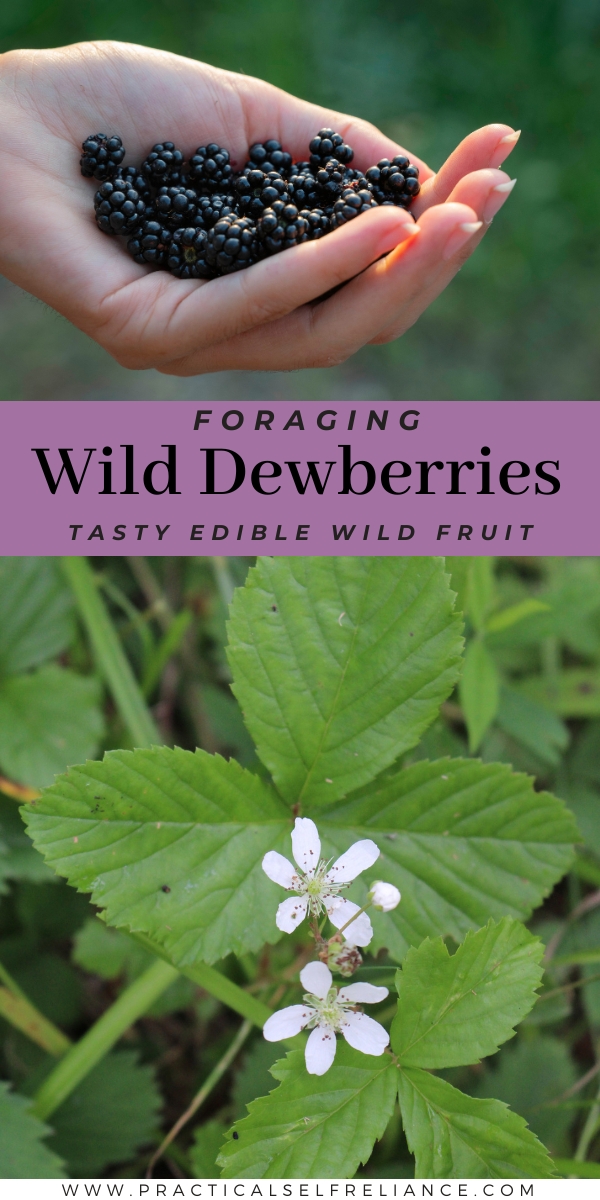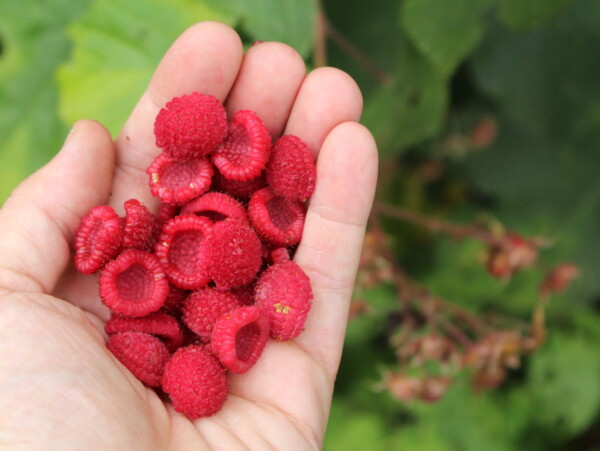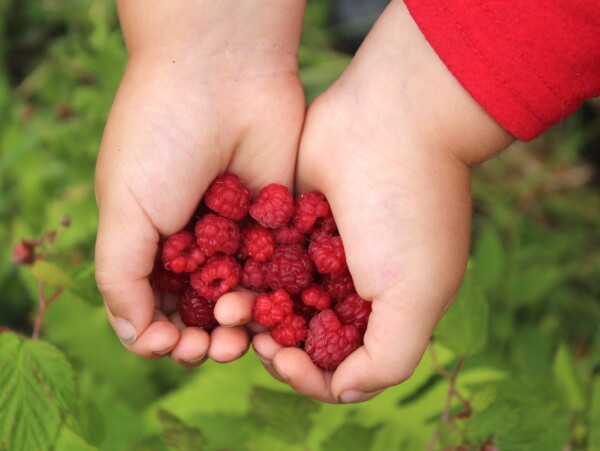Affiliate disclosure: This post may contain affiliate links. Please see our Privacy Policy.
Dewberries (Rubus flagellaris) are a fun, easy-to-identify blackberry relative that’s well worth seeking in the woods.
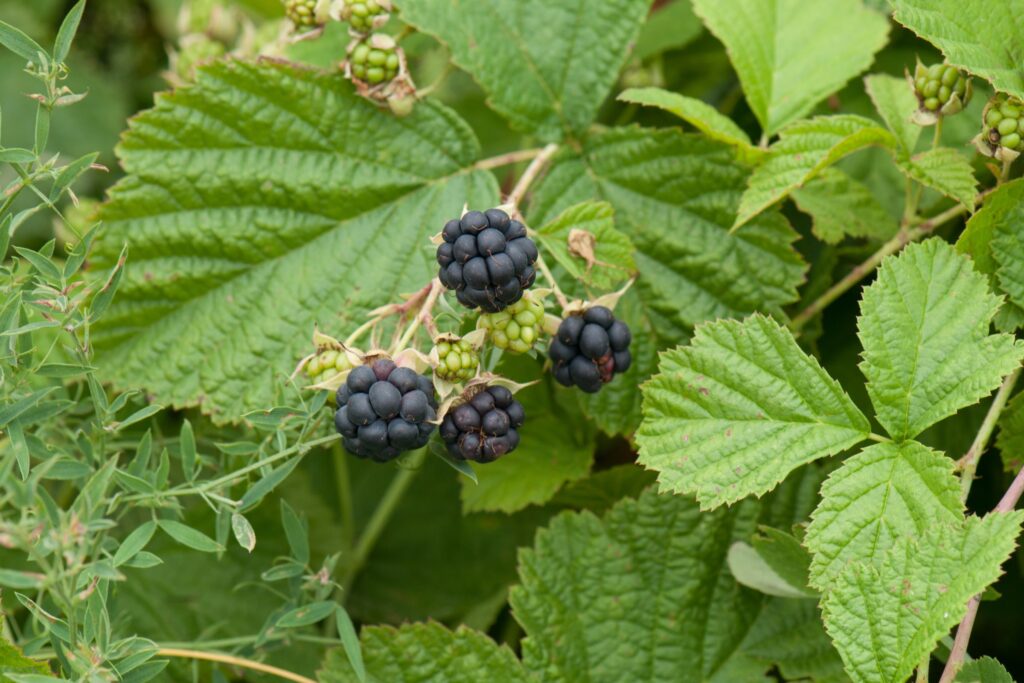
Northern Dewberries (Rubus flagellaris) are a tasty wild edible found throughout Central and Eastern North America from Texas through Eastern Canada. Other closely related Dewberry species are found throughout the northern hemisphere, and there’s a good chance you can harvest wild dewberries just about anywhere you live.
They’re closely related to blackberries, but have a low trailing growth habit rather than upright canes. They spread through seeds, and by putting down new roots as they trail across the forest floor, along the sides of paths, roadsides and in clearings.
Dewberries have alternate compound leaves, usually grouped in threes, but sometimes in fives just to confuse you. Leaves are roughly 3 inches long by 1 inch wide and have toothed edges. They’re highly adaptable, and can be found in a variety of soils and light conditions from dry sandy path edges to boggy wooded areas to meadows, lawns and roadsides.
As to fruit shape, they lack the hollow center of raspberries or the long cone-shaped fruit of blackberries and instead form a compact round fruit mass. To me, the small hard, unripe green berries near the ground on trailing runners are unmistakable.
While in the woods you’ll often mistake them for blackberries, but they have a tendency to pop up in the middle of lawns and can fruit below the mow line. Blackberries only produce at the end of their canes, so finding blackberry-like fruit in your lawn will likely be confusing.
Early in the season their low growing white flowers may also be confused for wild strawberries until the distinctive fruit begin to form. The leaves are also somewhat strawberry-like if you’re not looking closely.
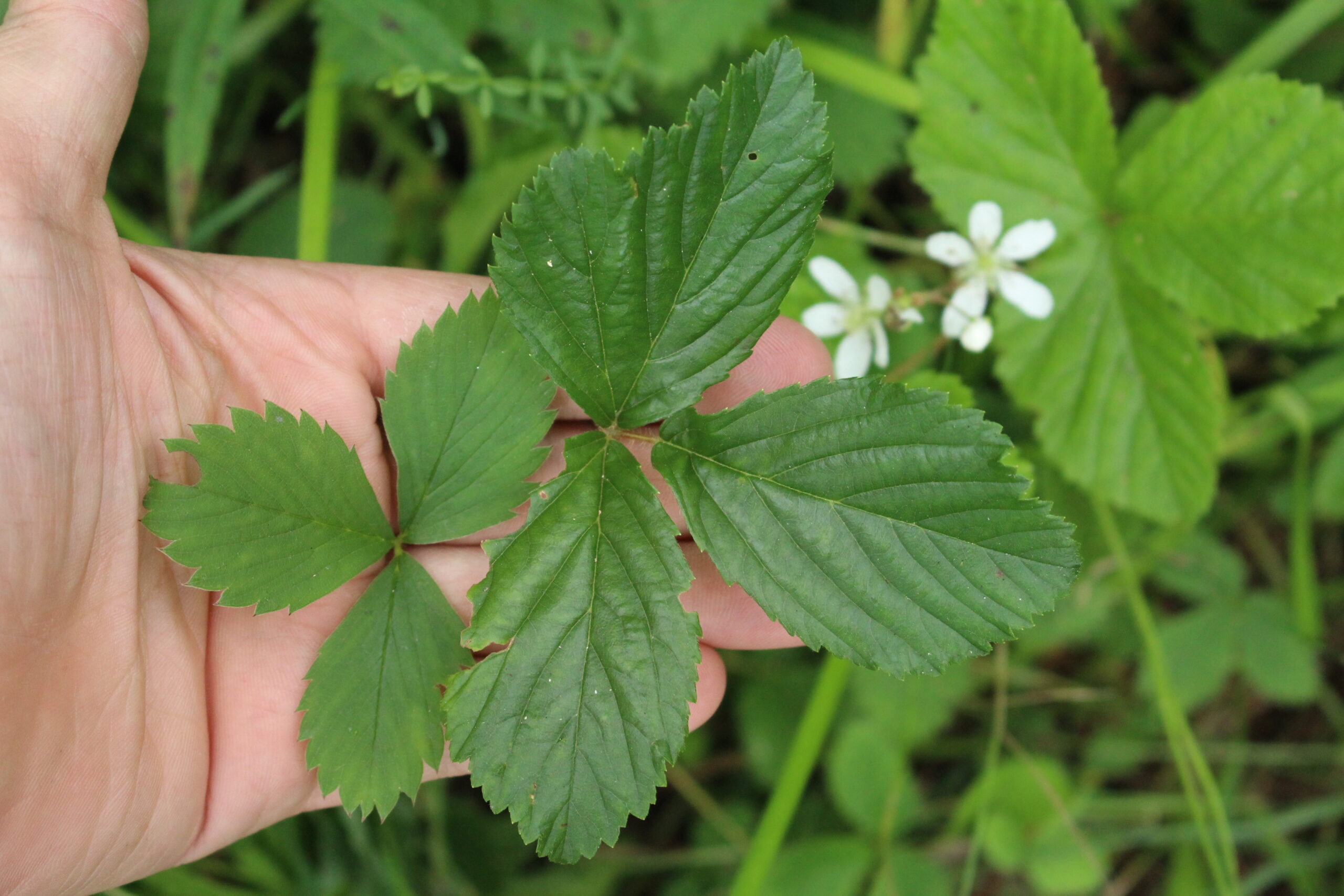
Their taste is more like a raspberry than a blackberry, but they’re darkly colored like blackberries. Some find their taste to be far superior to both blackberries and raspberries, and describe a unique smokiness. While I do think they have their own taste, I enjoy all three Rubus species equally.
Dewberries can be eaten fresh or prepared, similar to other Rubus species, in pies or jams. They tend to bear less prolifically than wild blackberries, so it may take you an hour or more in even a dense patch to find enough ripe fruit for a pie.
What is Northern Dewberry?
The Northern Dewberry (Rubus flagellaris) is a perennial, low-growing, somewhat vining shrub or subshrub in the Rose or Rosaceae family. It is native to North America.
Northern Dewberry is sometimes called Common Dewberry or just Dewberry. Some folks also refer to it as a Blackberry or Northern Blackberry, but it is different from the other Blackberry species you may be familiar with, like the Pennsylvania Blackberry (Rubus pensilvanicus).
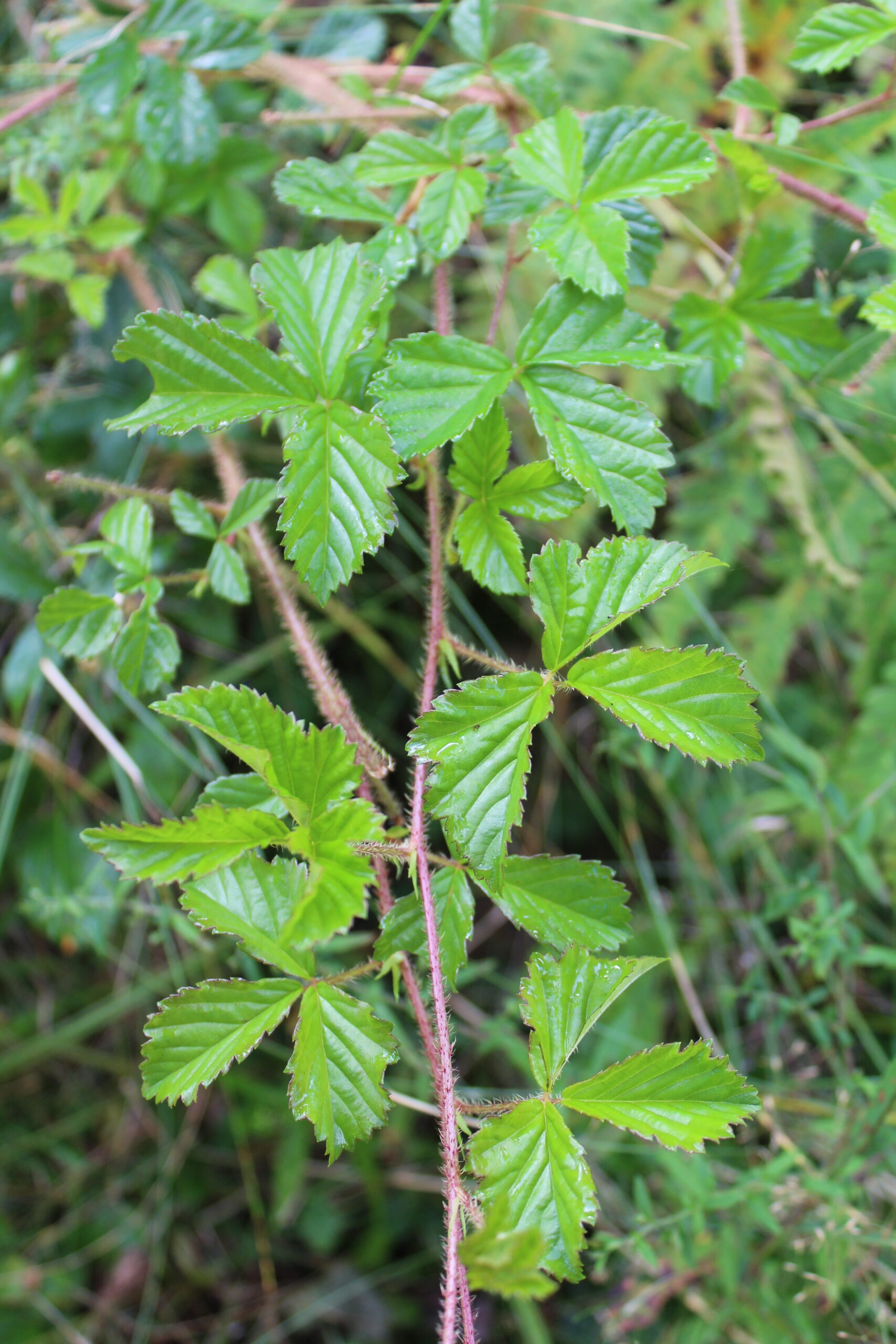
Is Northern Dewberry Edible?
Northern Dewberry is an easy-to-use wild edible. Like the better-known blackberry, the Northern Dewberry fruits are excellent fresh or cooked. You can also eat the young shoots as a green vegetable; like the berries, they’re tasty raw or cooked.
Like other members of the Rubus genus, herbalists of the past and present use the leaves and roots in internal and external applications.
Similarly to other Rubus species, Dewberry leaves are sometimes used to aid in labor. If you’re pregnant or breastfeeding, consult with your physician or midwife before using Dewberry medicinally.
Occasionally, Northern Dewberry grows in waste places. Be careful not to harvest these low-growing berries in places where exhaust fumes or other chemicals may have contaminated them.
Northern Dewberry Medicinal Benefits
While the berries may be the tastiest part of the plant, herbalists have mainly focused on Northern Dewberry’s leaves and roots.
Native Americans have used Northern Dewberry medicinally for centuries and probably passed that knowledge on to the settlers. The Osage people made tea from the roots to calm an upset stomach, and the Cherokee used these astringent root infusions to treat diarrhea, venereal disease, and rheumatism.
Other herbalists have also reported using root infusions as a stimulant or general tonic. Additionally, herbalists have also used this infusion externally as a wash to soothe hemorrhoids.
Herbalists and foragers also use the leaves to make a mild, pleasant-tasting tea. This tea may help treat diarrhea and digestive issues. Some herbalists also use it to help support healthy menstruation, pregnancy, and labor.
Appalachian herbalists have also reported using the juice from the berries to treat diarrhea.
Northern Dewberry is among the many Rubus species suspected to have many medicinal benefits by modern researchers. Rubus species are known to contain many important compounds, such as polyphenols, flavonoids, and anthocyanins. They may also have antioxidant, anti-inflammatory, analgesic, antipyretic, antidiabetic, anti-tumor, wound-healing, anti-cancer, and antibacterial effects.
One study also found that Northern Dewberry extract may have some helpful anti-HIV properties. Researchers testing the extract found that it inhibited the killing of T4 (CD4+) lymphoid cells (CEM-SS line) by H1V-l (RF strain).
Unfortunately, little study has been dedicated to Northern Dewberries. They are often grouped with other Rubus species, though they undoubtedly have some unique properties.
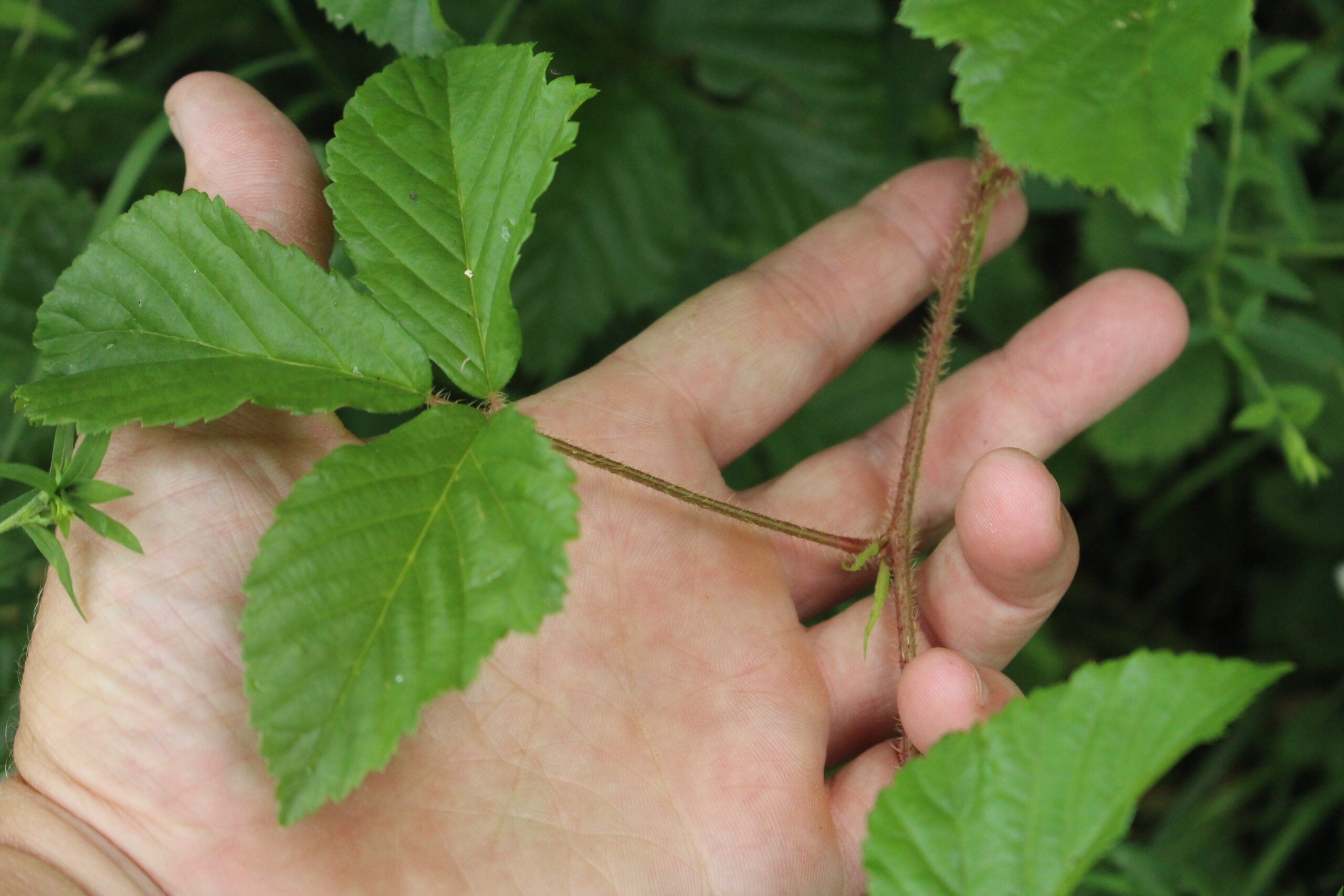
Where to Find Northern Dewberry
Northern Dewberry is native to North America. You can find it growing in eastern Canada and the eastern United States, as far west as Texas in the south and Nebraska in the north. It also grows in Northern Mexico.
Northern Dewberry thrives in full to partial shade. It will grow in sand, clay, or loam soils but does best with a neutral to acidic pH. It thrives in moist soil with good drainage but will tolerate occasional dry periods.
You can find Northern Dewberry growing in meadows, savannahs, abandoned fields, woodland borders, and woodland clearings.
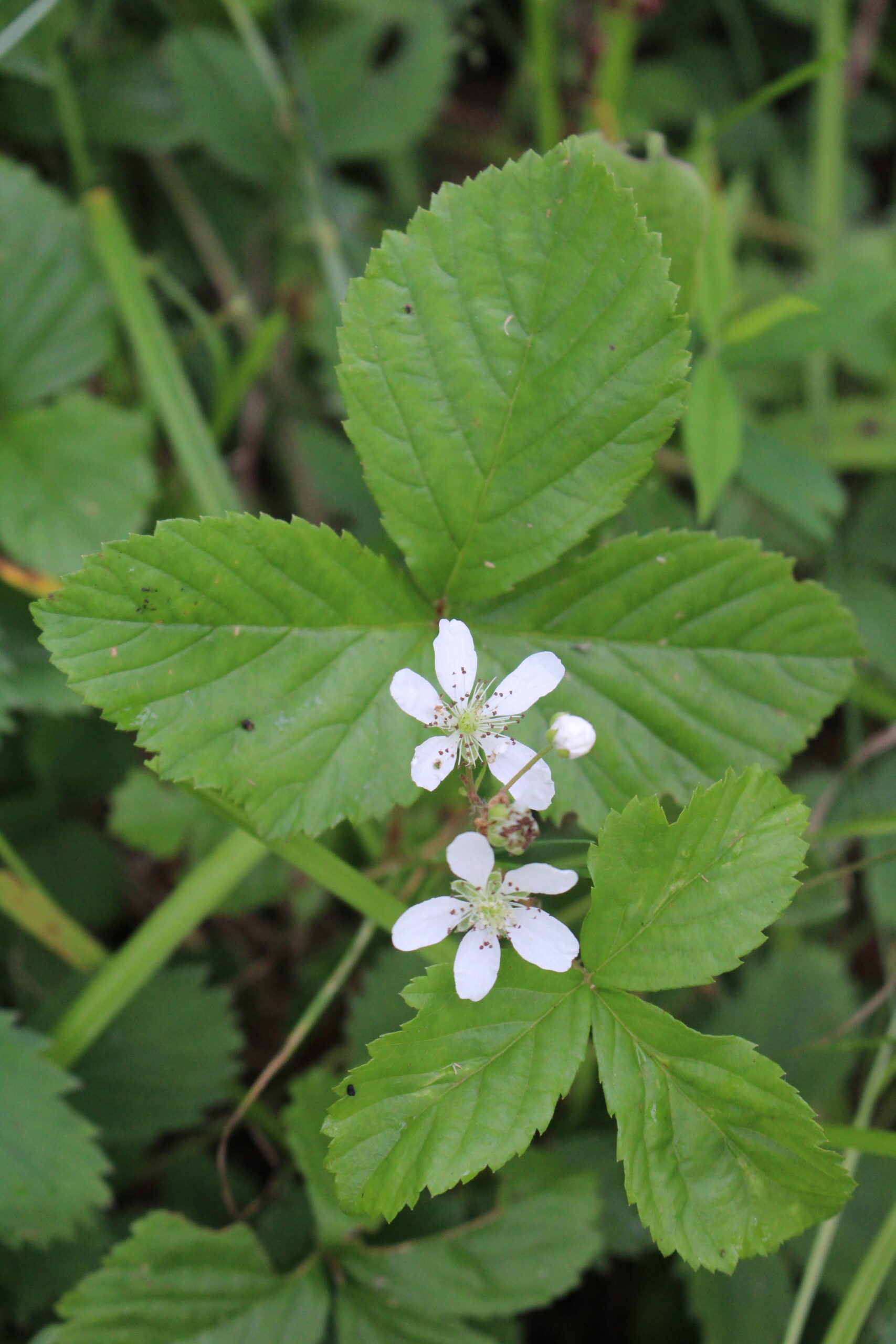
When to Find Northern Dewberry
Northern Dewberry’s perennial stems can be spotted year-round but are trickier to identify without leaves. In the south, Northern Dewberry may begin leafing out as early as March. In northern regions, it may not leaf out until April or May.
Flowers generally appear between April and May, depending on your climate.
To harvest the leaves for tea and herbal medicine, many herbalists recommend picking them when they’re young and tender in the spring before the plant has flowered or fruited. Herbalists believe the leaves are most potent and flavorful before the plant has spent its energy on flowering.
When you harvest the berries also depends on your location. In the Deep South, Northern Dewberry fruit can ripen as early as May. In northern areas like New England and the Great Lakes region, Northern Dewberry fruit may ripen as late as July.
You can dig roots any time of year. However, like the leaves, herbalists believe the best time to harvest the roots is when the plant has used them to store energy and nutrients, typically in fall, winter, or early spring.
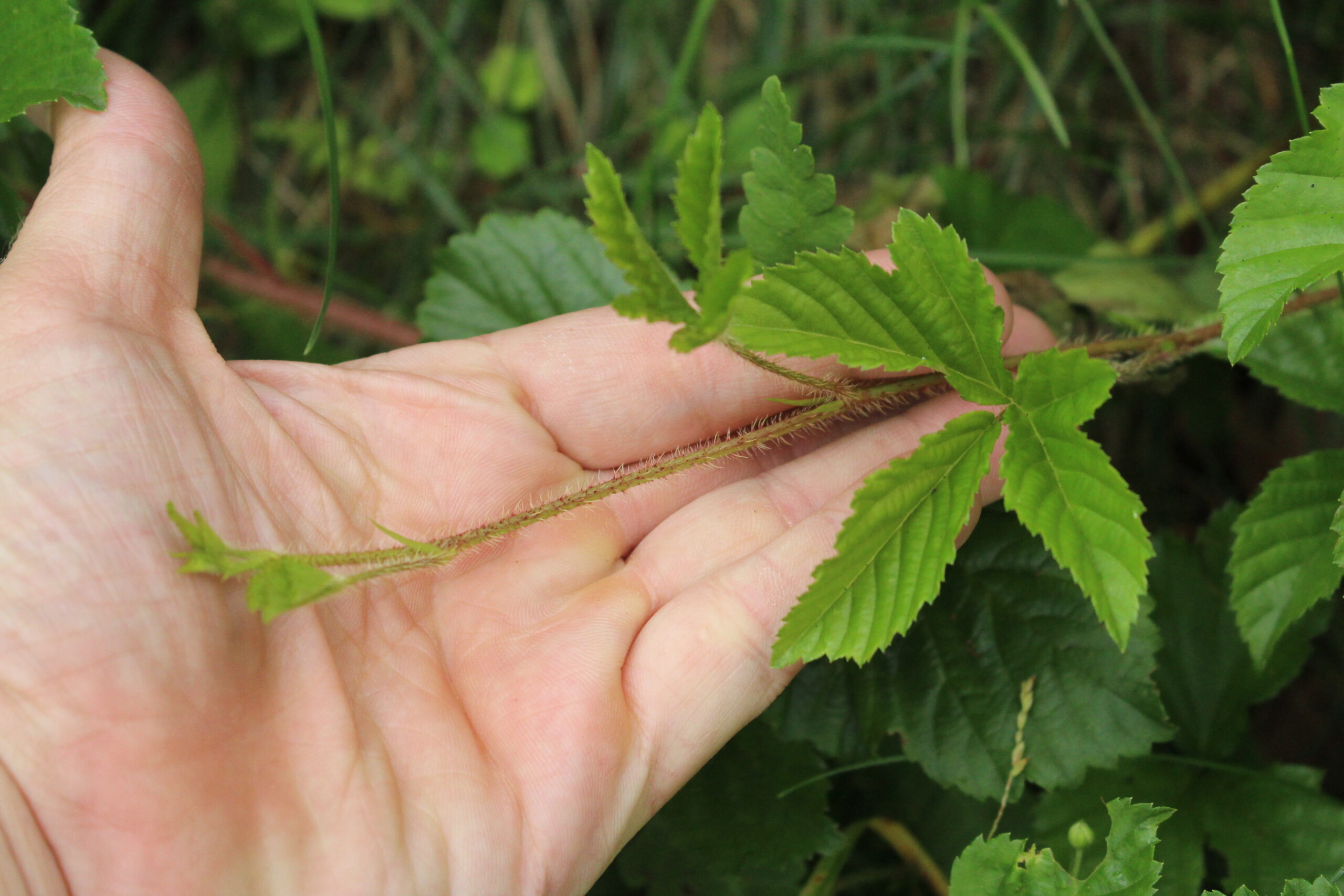
Identifying Northern Dewberry
Northern Dewberry has leaves and prickly stems that closely resemble other Rubus genus members in many ways. One of Dewberry’s most distinct features is that it’s a subshrub with a more vining or creeping form than most other species. You may spot it growing in colonies as these vining stems often root where they touch the ground to form clones.
The berries closely resemble blackberries that you may already be familiar with. If you’ve spotted “blackberries” growing along the ground, you’ve probably seen dewberries before.
Northern Dewberry Leaves
Northern Dewberry has compound leaves that typically have three leaflets, though they occasionally have five. The terminal leaflet has a short petiole, while the other leaflets are sessile or directly attached to the stem.
The leaflets are ovate, with serrated edges and noticeable pinnate venation. They’re green or dark green above and pale or whitish below. Individual leaflets may be up to 3 inches long and 1 inch wide.
The leaves may take on reddish or purplish tinges in late summer and fall.
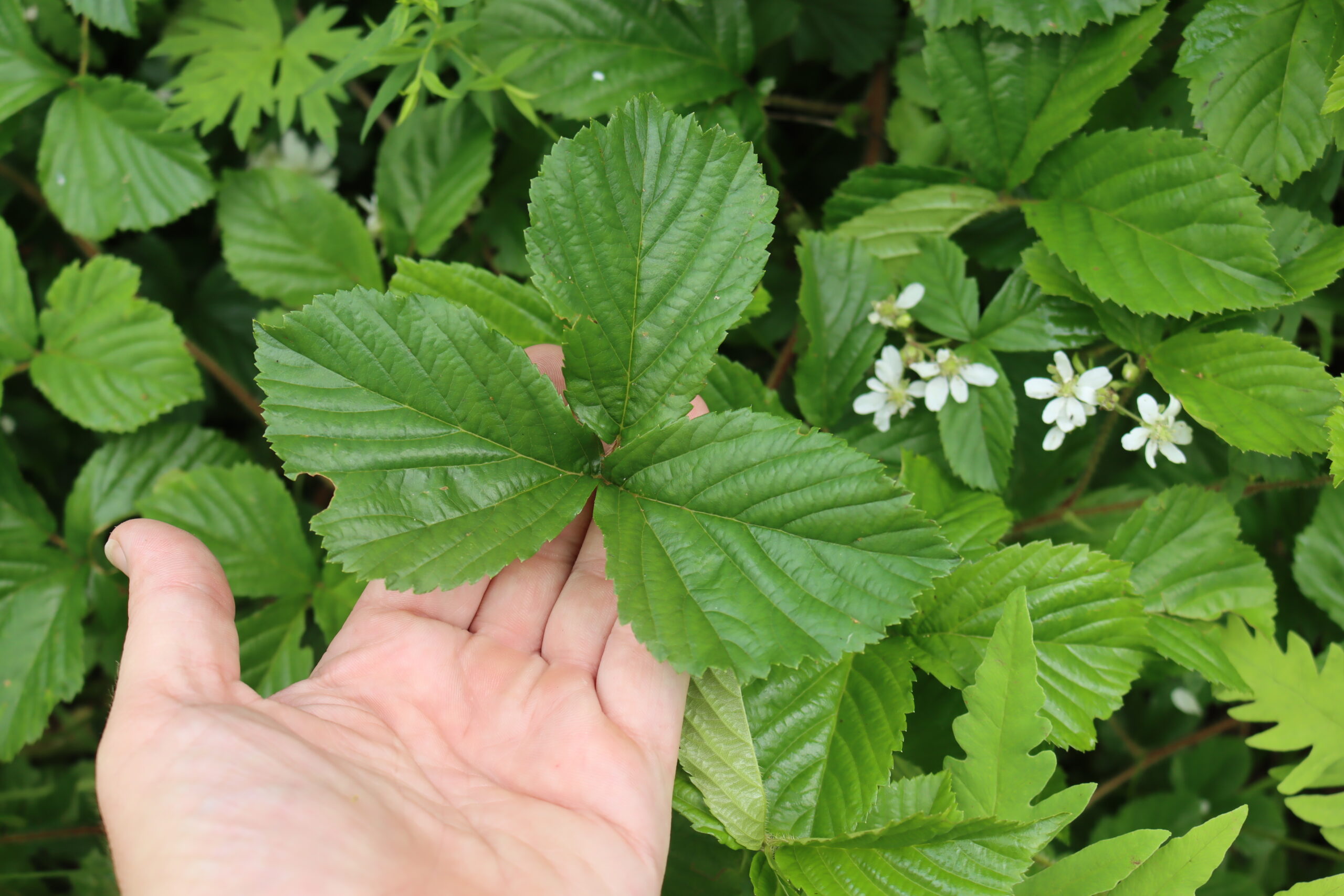
Northern Dewberry Stems
Northern Dewberry has woody, low-growing stems. Individual stems can reach 15 feet long and have scattered hooked prickles. The stems are often green when young but become brown with age. The prickles are usually softer on younger stems and harden with age. The young stems frequently root at the tips or where they touch the ground to form clones.
Northern Dewberry begins fruiting in its second year of life. At this stage, it forms fruiting stems from the main creeping stem. These stems may lay on the ground or be slightly more upright, occasionally reaching up to four feet tall. These stems die back after fruiting, but the main stem remains.
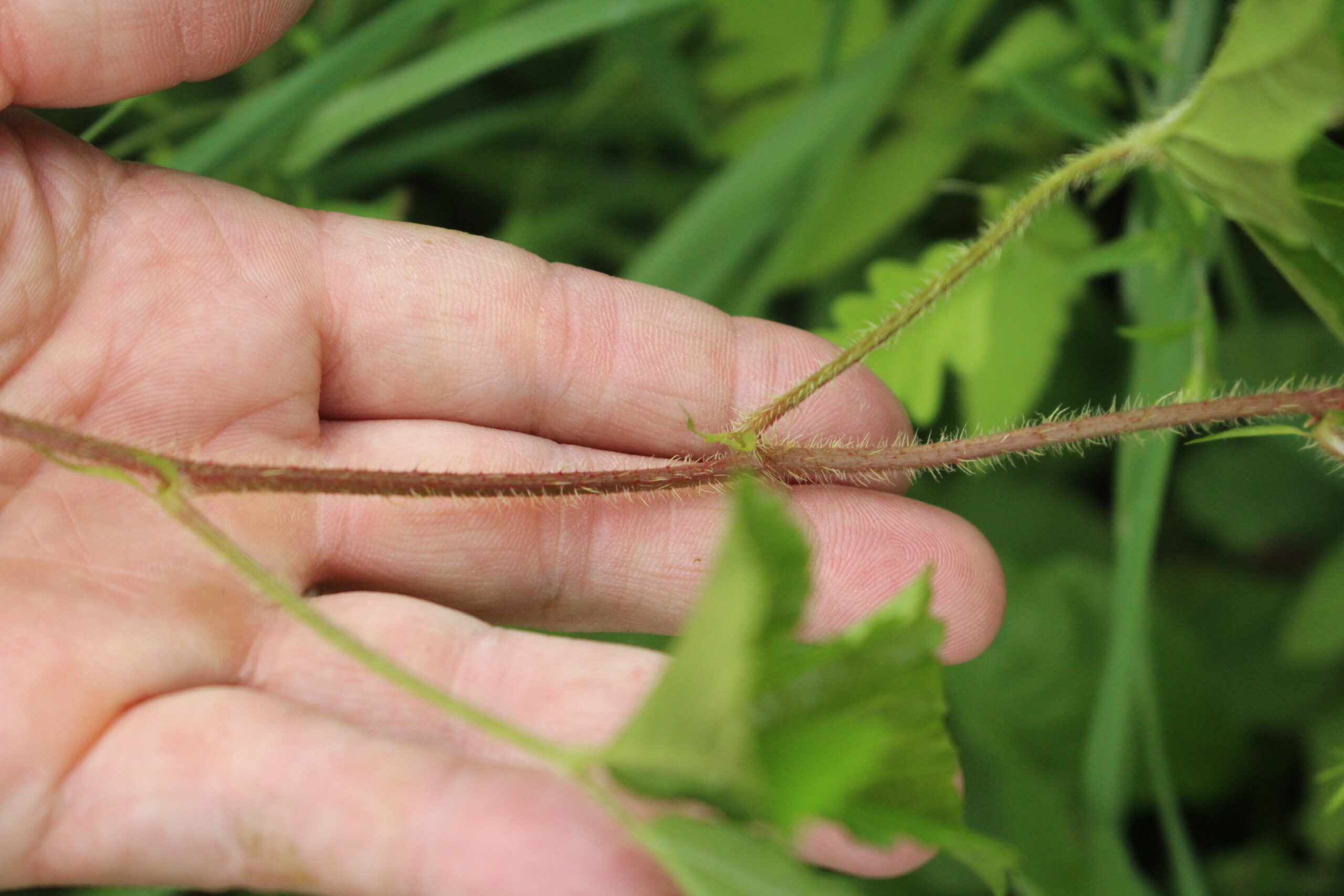
Northern Dewberry Flowers
Each Northern Dewberry flowering stem forms about one to five flowers. The flowers are showy, five-petaled, white, and about 1 to 1 1/4 inches in diameter.
They each have five green sepals. The flowers open each morning and close each night.
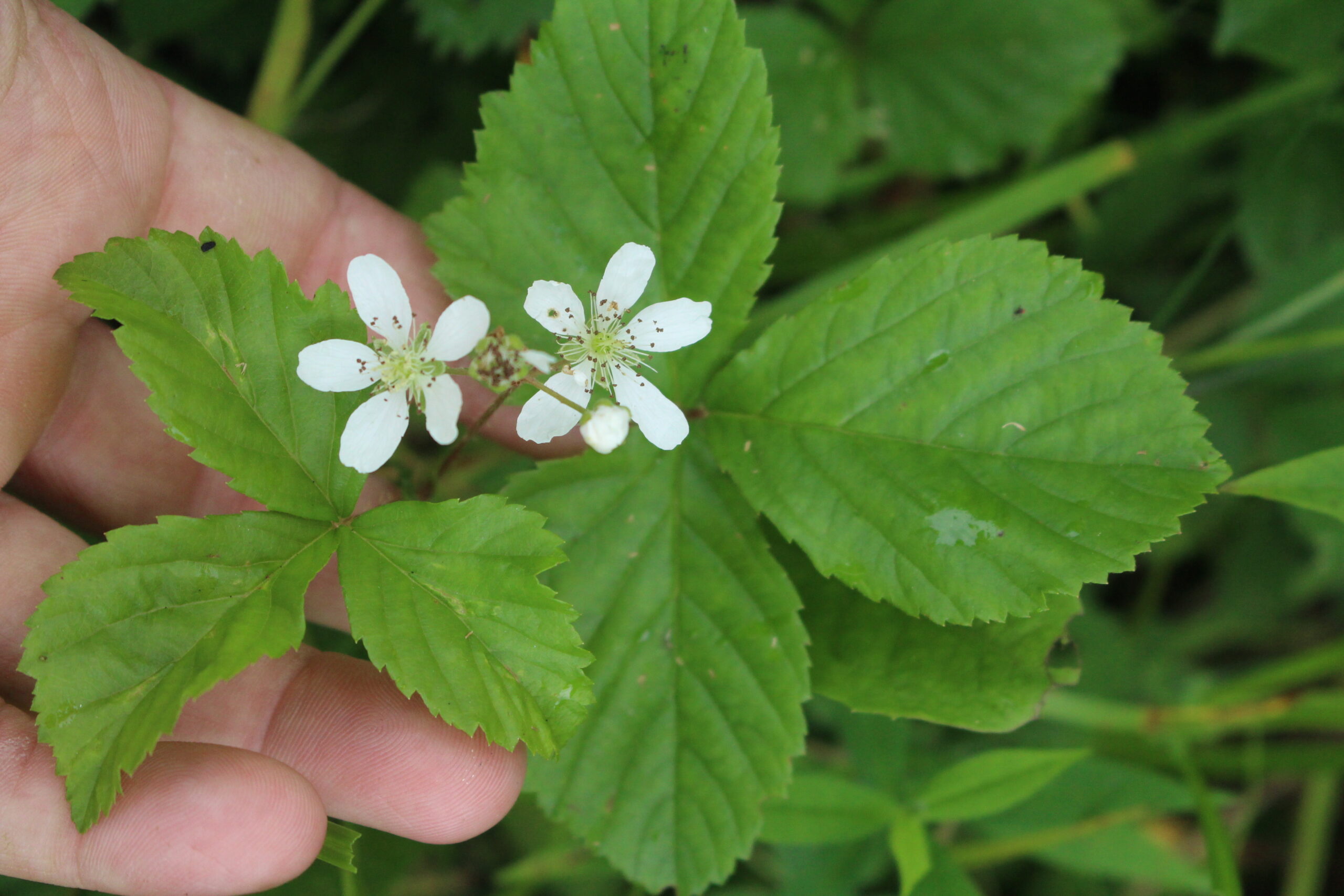
Northern Dewberry Fruit
Once fertilized, Northern Dewberry flowers give way to a type of fruit called drupes. The drupes grow up to 1 inch long and are usually about ½ to 1 inch wide. They begin as green and slowly ripen to pinkish, red, and finally a blue-black or purplish color between May and July.
Unlike raspberries that are hollow-centered, dewberries have a solid, soft white or greenish center that stays in the dewberry when you pick it.
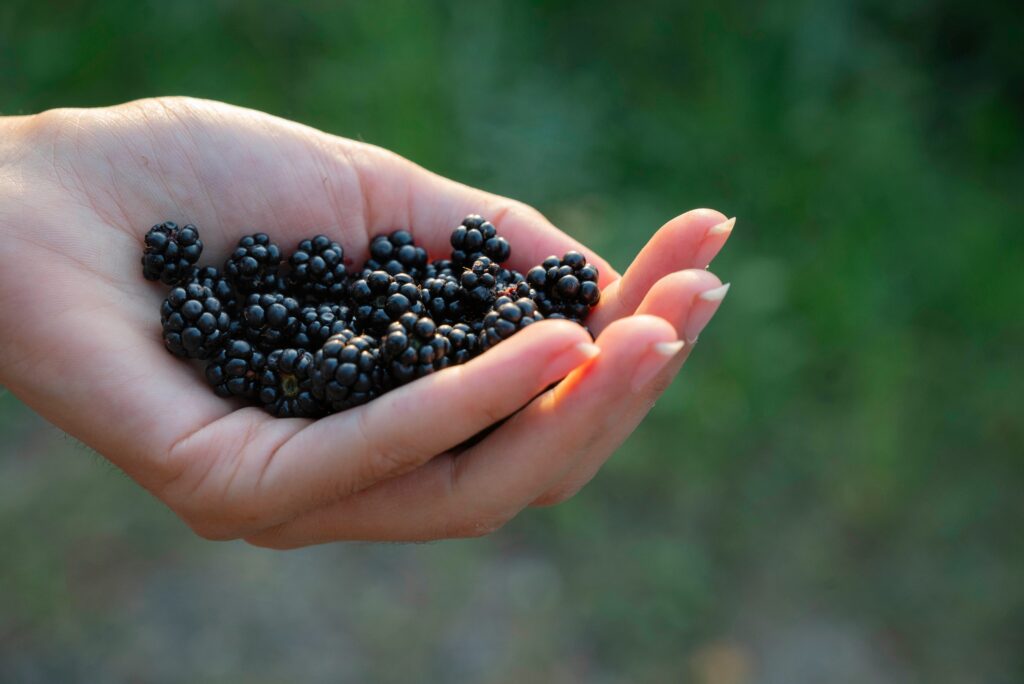
Northern Dewberry Look-Alikes
Northern Dewberry is easily mistaken for another common Rubus species on the east coast, the Pennsylvania Blackberry (Rubus pensilvanicus). However, there are a few easy ways to tell them apart:
- The Pennsylvania Blackberry forms large, arching canes, sometimes up to 10 feet tall.
- Young Pennsylvania Blackberry canes are often greenish, but older canes are usually reddish, reddish-brown, or black.
- Pennsylvania Blackberry canes are usually ridged.
- Pennsylvania Blackberry flower petals have a wrinkled appearance.
- First-year Pennsylvania Blackberry canes usually have compound leaves with five leaflets, while leaves on second-year canes have three.
Northern Dewberry can also be confused with its close relative, Swamp or Prickly Dewberry (Rubus hispidus). Here’s how you can tell them apart:
- Swamp Dewberry is generally smaller, with the main vines reaching 4 to 8 feet long.
- Swamp Dewberry leaflets are smaller, about 1 to 2 inches long.
- Swamp Dewberry leaves are dark green and glossy.
- Swamp Dewberry thorns are fine and hair-like.
Lastly, Northern Dewberry resembles Southern Dewberry (Rubus trivialis). You can distinguish them in the following ways:
- Southern Dewberry stems are covered with stiff hair or bristles in addition to their thorns.
- Southern Dewberry usually blooms in March or April.
- Southern Dewberry forms solitary flowers at the ends of short flowering branches.
- Southern Dewberry fruits grow 1 to 3 inches long.
Ways to Use Northern Dewberry
Northern Dewberries are easy plants to recognize and enjoy. During the summer, the berries make an excellent fresh snack. Like blackberries and raspberries, they also make wonderful jams, jellies, and syrups.
You can also add them to all your favorite desserts like cobbler, ice cream, or crisp. For a healthier approach, dewberries work well in salad dressings, smoothies, and oatmeal. They also freeze well so you can put up any abundance for later.
You can also harvest the young shoots in early spring. These shoots are like mild vegetables. You can use them raw in salads or lightly saute or steam them.
The leaves also make a pleasant-tasting tea that may have some medicinal benefits. It’s slightly astringent and could help soothe indigestion and diarrhea. You can also use the astringent roots in tea. Herbalists believe the roots may help treat diarrhea, stomach issues, and some minor inflammation or infections.
You can dry the leaves and roots and store them in airtight containers for later use. You can also experiment with using them in tinctures.
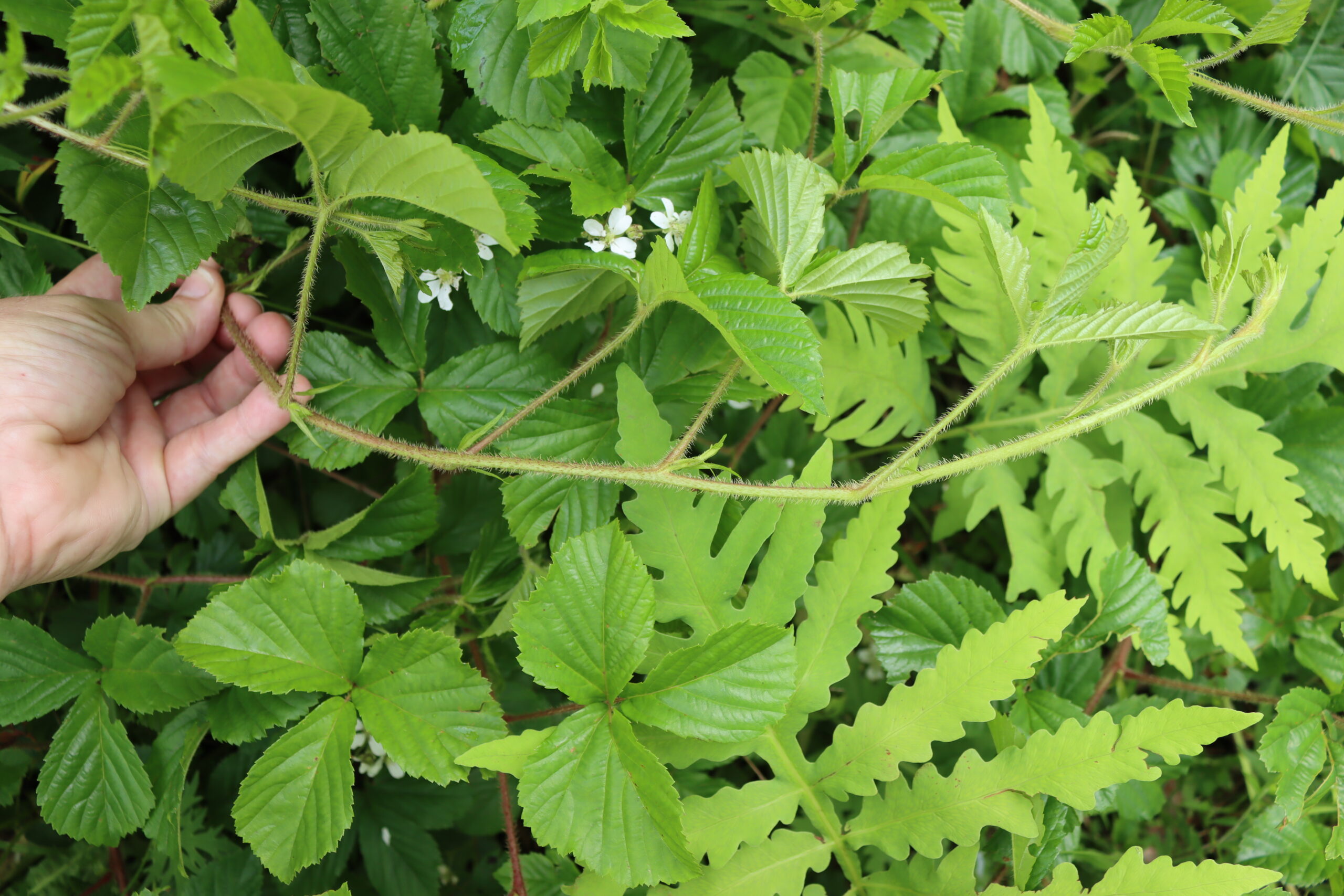
Dewberry Recipes
- Turn your dewberries into a delicious treat with this recipe for Dewberry Dumplings from Bayou Woman.
- Several delightful Dewberry recipes are available in the South Texas Rangeland online Native Plant Recipe Book. Try their Dewberry Breakfast Bars, Dewberry Jam, or Dewberry Cobbler.
- Like other Rubus species, Northern Dewberry leaves make a mild, pleasant-tasting, healthful tea. Grow a Good Life offers excellent directions for harvesting, preserving, and brewing raspberry leaf tea, which you can also use for dewberries.
- With this recipe from The Herbal Academy, you can make a delicious Dewberry Syrup to add to ice cream, cocktails, pancakes, oatmeal, and other sweet treats
- Preserve your excess dewberries with these instructions for No Pectin Added Dewberry Jam from the College of Edible and Medicinal Plants.
